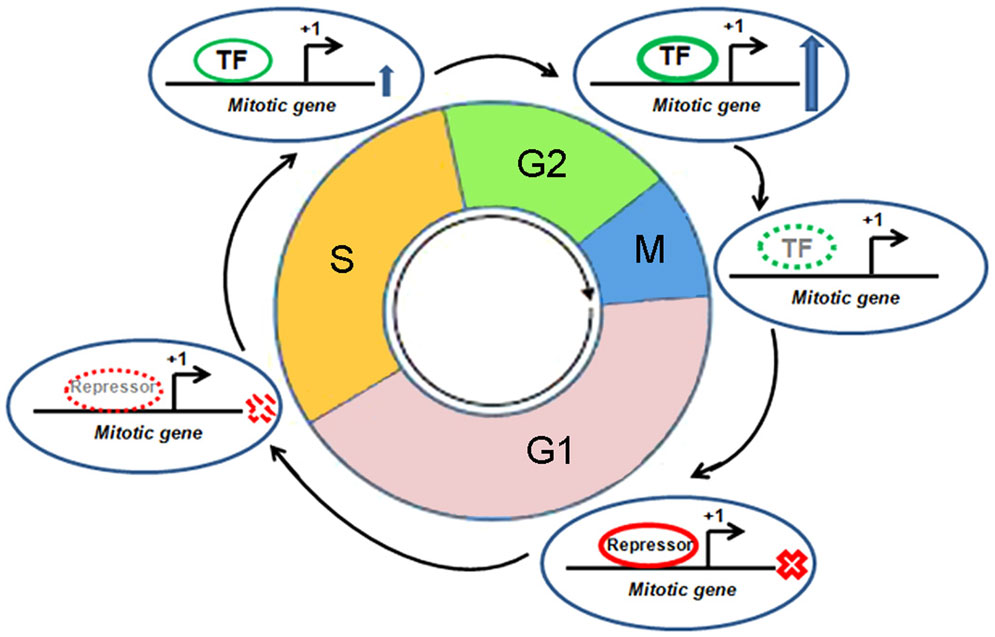wide transcriptional analysis of the human cell cycle identifies Biology Diagrams Classical regulators include the transcription factors E2F1 and FOXM1 that are required for the temporal control of gene expression in G1-S and G2-M stages of cell cycle, respectively 4,19,20,21

Transcription factors (TFs) are key regulators of intrinsic cellular processes, such as differentiation and development, and of the cellular response to external perturbation through signaling pathways. In this review we focus on the role of TFs as a link between signaling pathways and gene regulati … A list of 102 cell cycle genes was generated by combining 68 key cell cycle genes reported by ref. 74 with a manually curated list of 34 genes. The MYC target gene list was previously reported by The E2F transcription factors are key regulators of cell cycle progression and the E2F field has made rapid advances since its advent in 1986. Yet, while our understanding of the roles and functions of the E2F family has made enormous progress, with each discovery new questions arise.

Control of cell cycle transcription during G1 and S phases Biology Diagrams
Evidence has supported a broad role for apoptosis-related genes in cell-cycle progression, possibly through direct regulation of the E2F class of transcription factors or other activities

Significance of the periodic transcription program. (a) Genes are expressed only during the cell-cycle phase needed.Genes required for DNA replication are expressed during S phase. (b) The temporal order of gene expression may aid in the construction of a protein complex only needed once per cycle.(c) While protein levels of cell-cycle regulators may remain constant, posttranslational

resolution transcriptome map of cell cycle reveals novel ... Biology Diagrams
Many proteins that carry out important functions during the cell cycle display a cyclic expression pattern that is often regulated on the transcriptional level (13, 14).Because it has been shown that cell-cycle gene expression serves as a tumor signature (), extensive efforts have been devoted to identify periodically expressed genes across the cell cycle using microarray platforms (4, 16-20). This work has revealed many new insights into how transcription of different G1-S cell cycle genes is restricted to G1 and how this is regulated by DNA replication checkpoint protein kinases as part of the checkpoint transcriptional response. Landman A, Futcher B. The G1 cyclin Cln3 promotes cell cycle entry via the transcription factor
